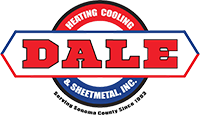If you’re trying to crack the code of HVAC Energy Efficiency Ratings, you’ll want to refer to this information when shopping for a new or upgraded HVAC system.
Understanding HVAC ratings will help you make the best purchase for the comfort of your home.
The Purpose of HVAC Energy Efficiency Ratings
The reason for and purpose behind HVAC Energy Efficiency Ratings is to give buyers a baseline to compare products so they can choose the best performing, most efficient system specifically for their region and home.
The Department of Energy uses HVAC Energy Star ratings to help measure system efficiency, which limit the number of pollutants and gas emissions discharged, while conserving fuel/energy resources.
De-Coding HVAC Energy Efficiency Ratings
To maintain comfortable, consistent temperatures in your home, save on your monthly energy bills and do your part to keep the environment safe, choosing an HVAC system that meets or beats industry standards is the way to go.
Here are some explanations of terms and ratings to help you through this process.
SEER Ratings
The SEER rating, or Seasonal Energy Efficiency Ratio, is one of the best indicators of the energy efficiency of an HVAC system.
A SEER rating measures the overall efficiency of your HVAC system. To break it down further, it’s the ratio of cooling output measured over the duration of a typical cooling season by region. This cooling output ratio is then divided by the energy used, measured in watt-hours.
The system’s cooling output ratio number is determined by how much energy it takes to maintain consistent indoor temperatures over the course of varying seasonal outdoor temperatures.
In the U.S., the minimum HVAC SEER rating is currently between 13 and 14 and goes up from there. An older HVAC system is typically between an 8 or 9 SEER rating range, so you can see the big difference in energy efficiency a new system has to offer.
It’s also important to remember that there are other factors that can affect the overall SEER rating, such as ductwork, ventilation, and the blower fan. Whether the blower fan is in the furnace or AC unit, it needs to efficiently handle the amount of air circulated throughout your home.
A good rule of thumb is to remember that the higher the number of the SEER rating, the more energy efficient the HVAC system.
Are Energy Efficiency Ratings for Heating, Cooling or Both?
When researching SEER ratings, you need to understand which of them apply to the different parts of your HVAC system.
While SEER ratings focus on the ratio of the air conditioning cooling ratio, there are other ways to measure energy efficiency of an HVAC system.
Heating Seasonal Performance Factor (HSPF)
You may become familiar with this term if your home uses a heat pump. A heat pump is used for either heating or cooling your home, depending on the season.
The HSPF rating is determined by dividing the heating output, or BTUs, by the energy it takes to support consistent indoor temperatures.
Much like a SEER rating, the higher the HSPF rating, the more efficient the heating unit. An average HSPF rating is 7.7, the minimum industry standard. In colder climates, a higher HSPF rating is recommended.
Annual Fuel Utilization Efficiency (AFUE)
This rating measures the efficiency of furnaces, or how much heat is produced by the furnace. The rating shows what percentage of fuel your furnace actually uses to heat your home.
For instance, with an AFUE rating of 80, it means that 80% of fuel is being used towards heating your home, while 20% is wasted gas generated by running the furnace.
Conclusion
While it’s good to have a better understanding of HVAC ratings while doing research on a new or replacement system, it can still be confusing. Keep in mind that each home has different needs and choosing a system way over minimum ratings may not always be the best choice for you.
For help when deciding on a new HVAC system in Sonoma County, reach out to the experts at Dale HCS.
We have the knowledge and experience to walk you through and explain the many factors that go into HVAC Energy Efficiency ratings so you can enjoy maximum savings and comfort.

